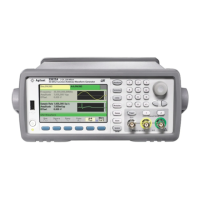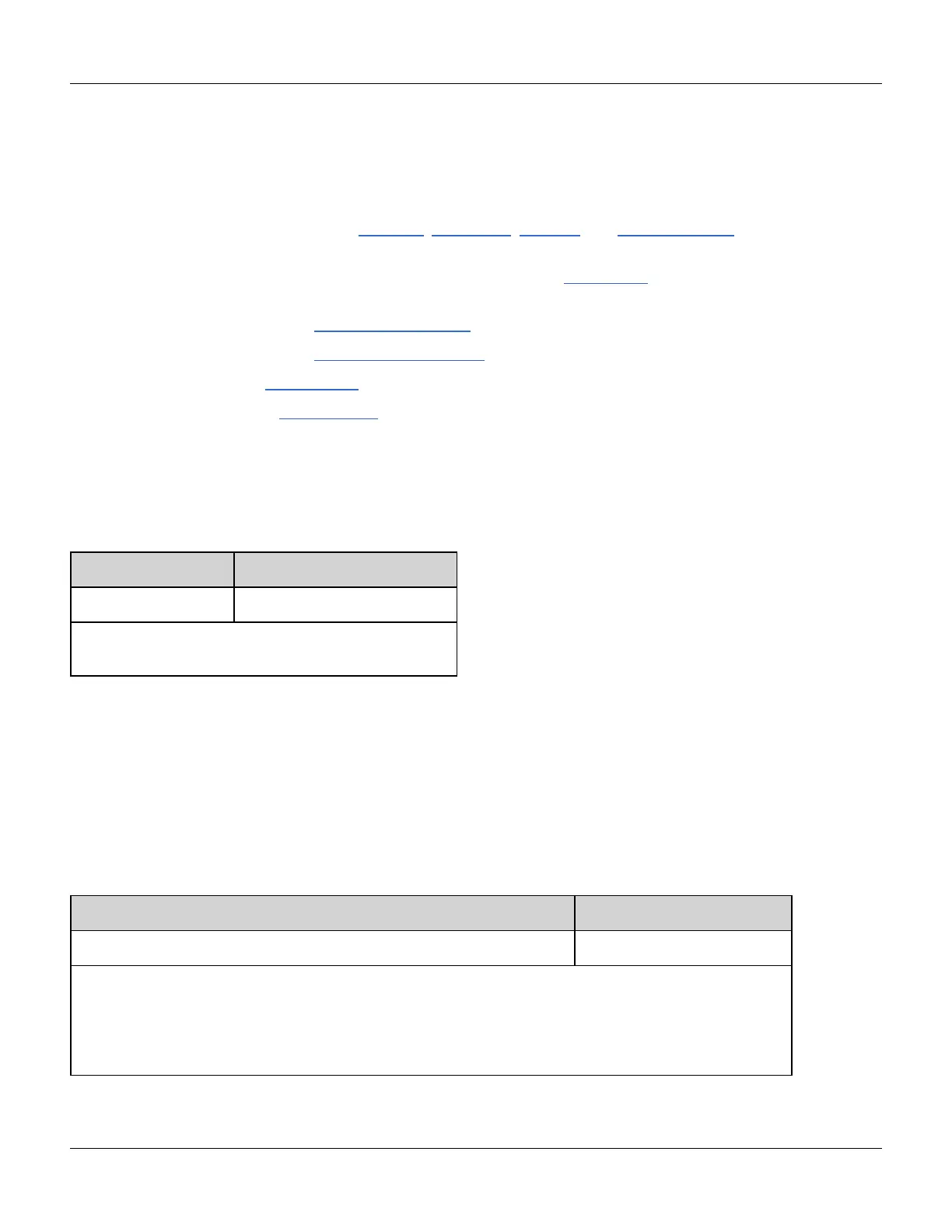PM Subsystem
PM Subsystem
The PM subsystem allows you to phase modulate a waveform.
This summarizes the steps required to generate a phase modulated waveform.
1. Configure carrier waveform: Use FUNCtion, FREQuency, VOLTage, and VOLTage:OFFSet to specify the carrier
waveform's function, frequency, amplitude, and offset.
2. Select modulation source (internal, external, CH1 or CH2): PM:SOURce. For an external modulation
source, skip steps 3 and 4.
3. Set modulating waveform: PM:INTernal:FUNCtion
4. Set modulating frequency: PM:INTernal:FREQuency
5. Set phase deviation: PM:DEViation
6. Enable PM Modulation: PM:STATe:ON
[SOURce[1|2]:]PM:DEViation {<deviation in degrees>|MINimum|MAXimum}
[SOURce[1|2]:]PM:DEViation? [{MINimum|MAXimum}]
Sets the phase deviation in degrees. This value represents the peak variation in phase of the modulated waveform
from the carrier waveform.
Parameter Typical Return
0 to 360, default 180 +9.000000000000000E+01
Set phase deviation to ± 90 degrees
PM:DEV 90
l With the External modulating source, deviation is controlled by the ±5 V signal level on the rear-panel Mod-
ulation In connector. For example, if you have set the frequency deviation to 180 degrees, then a +5 V signal
level corresponds to a +180 degree phase deviation. Lower external signal levels produce less deviation, and neg-
ative signal levels produce negative deviation.
[SOURce[1|2]:]PM:INTernal:FREQuency {<frequency>|MINimum|MAXimum}
[SOURce[1|2]:]PM:INTernal:FREQuency? [{MINimum|MAXimum}]
Sets the frequency of the modulating waveform. The waveform chosen as the modulating source will operate at that
frequency, within the frequency limits of that waveform.
Parameter Typical Return
1 μHz to the maximum allowed for the internal function. Default 10 Hz. +1.000000000000000E-06
Set modulating frequency to 10 kHz:
PM:INT:FREQ 10000
Set modulating frequency to 1 μHz:
PM:INT:FREQ MIN
Agilent 33500 Series Operating and Service Guide 267

